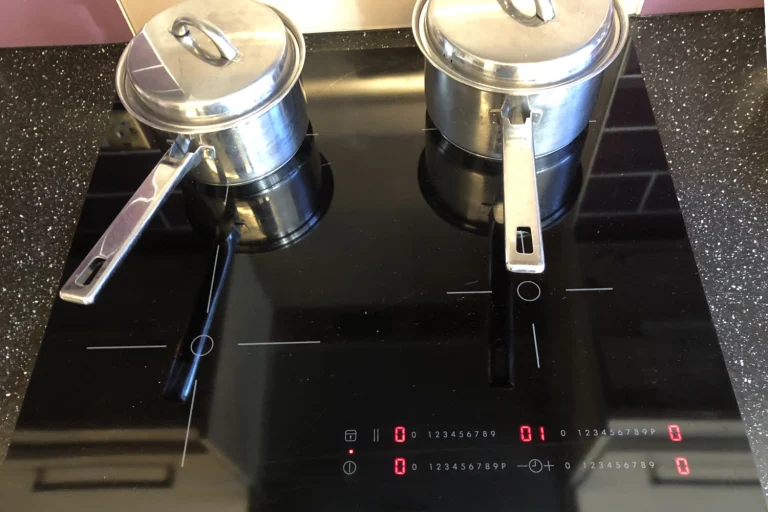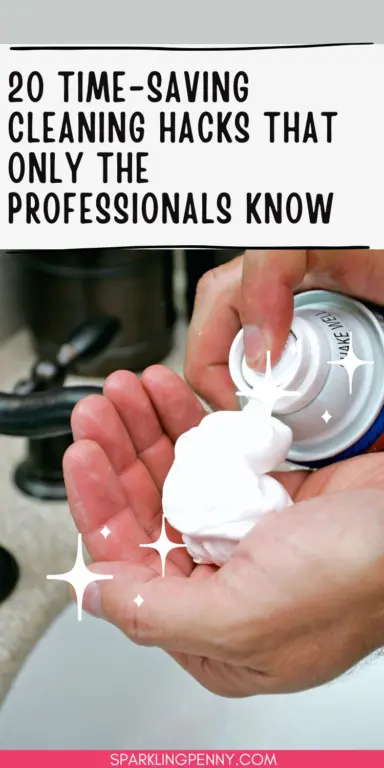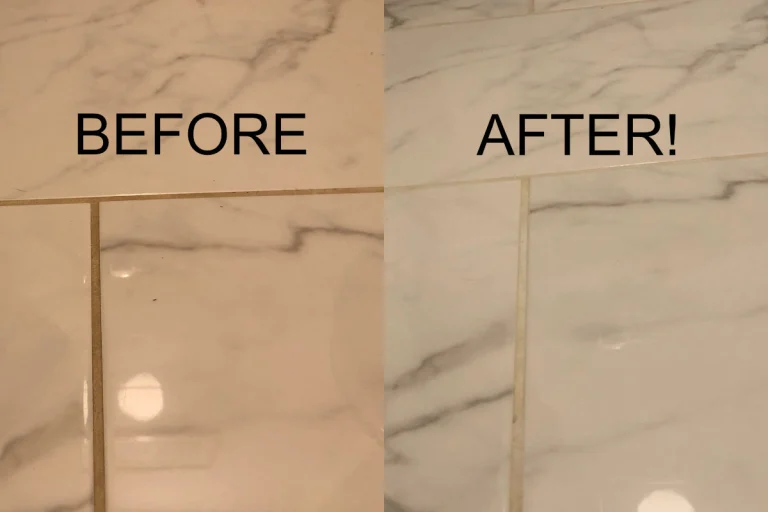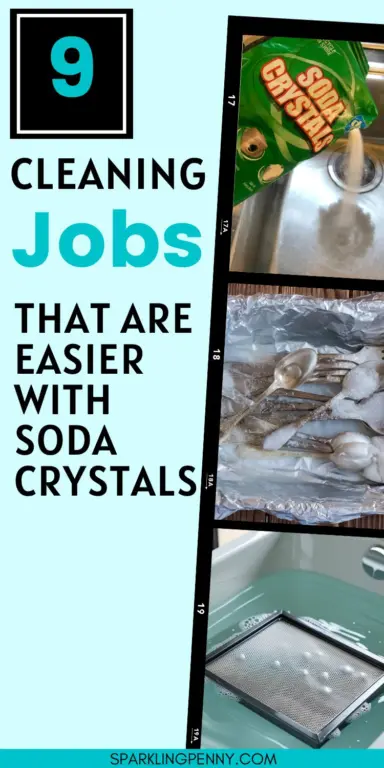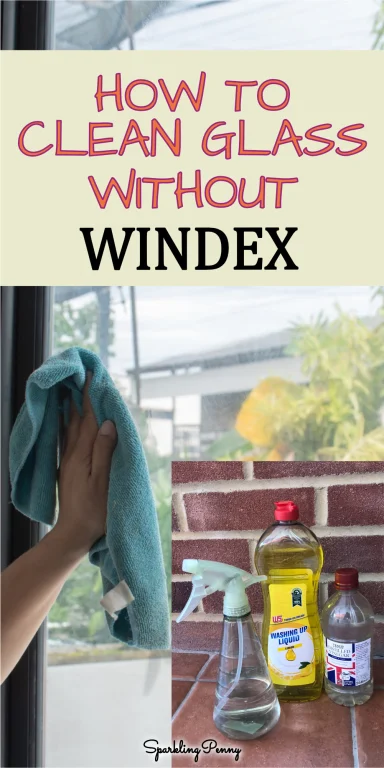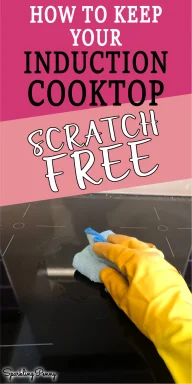Induction cooking is a modern and efficient way to cook food using electromagnetic fields. I had one fitted in my new kitchen 8 years ago and would never switch back to gas, I love it so much.
An induction cooktop heats up the pan directly, making it a highly efficient and precise cooking method.
However, with regular use, food residues, spills and stains can accumulate on the hob surface, so it’s important to clean it regularly.
In this article, I will share the best ways to clean an induction cooktop, including the best cleaning tools, and some step-by-step instructions for effective cleaning.
Heads up: I sometimes use affiliate links. When you click these links and make a purchase, I may get a small commission. It won't cost you anything but it helps me to run this site.
How do inductions cooktops work?
Induction cooking is a type of technology that uses electromagnetism to heat cookware.
Unlike traditional gas or electric cooktops, an induction stove top does not produce heat itself.
Instead, the induction cooktop generates a magnetic field that induces an electric current in the cooking vessel, which in turn generates heat. This results in a highly efficient and responsive cooking surface that heats up quickly and cools down fast.
One of the benefits of induction cooking is that it is safer than other forms of cooking. Since the cooking surface does not get hot, there is no risk of burning yourself on the stove top.
Additionally, induction cooking is more energy-efficient since the heat generated is directly transferred to the cooking pan, reducing heat loss and energy waste.
With the right cookware, induction cooking is a great way to prepare your meals with precision and control.
To use induction cooking, you need to have cookware that is compatible with the magnetic field generated by the induction cooktop, which includes cast iron or stainless steel. Aluminum or copper cookware will not work.
Why it’s important to maintain your induction cooktop
An induction cooktop is a popular choice for many people because of its speed and efficiency, but it also requires proper maintenance to keep it functioning well.
Maintaining a clean induction cooktop is crucial for a number of reasons:
- Improved cooking performance: If there are food residues or stubborn stains on the surface of the cooktop, it can affect the performance of the cooktop. A clean surface ensures that the cooktop is working efficiently and effectively.
- Increased safety: Food residues and spills can pose a fire risk if left unattended. Cleaning up spills and residues immediately after cooking can reduce this risk.
- Longevity: Keeping the cooktop clean and free from scratches can increase its lifespan. This means you can enjoy the benefits of your induction cooktop for many years to come.
- Aesthetics: A clean induction cooktop looks great in any kitchen. A dirty or stained cooktop can detract from the overall look of your kitchen, so it’s important to keep it clean.
In short, maintaining a clean induction cooktop is important for cooking performance, safety, longevity, and appearance. It’s worth taking the time to properly clean your cooktop after each use to ensure that it continues to function well for years to come.
What to use to clean your induction cooktop
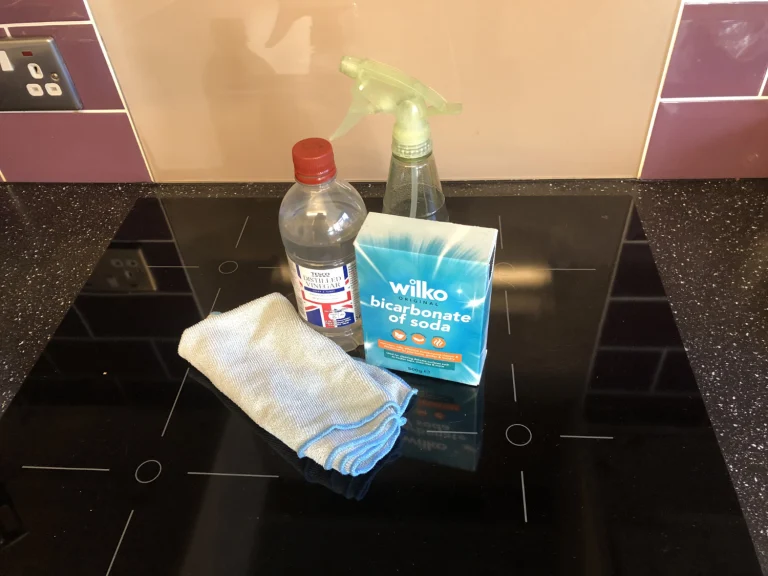
When it comes to cleaning an induction cooktop, there are several common cleaning tools and materials that you can use to keep the surface looking and functioning its best.
These include:
- Damp microfiber cloth
- Dry microfiber cloth
- Soft sponge
- Damp sponge
- Paper towel
- Cleaning agents, such as distilled white vinegar, dish soap, washing soda crystals or baking soda (bicarbonate of soda)
Each of these tools and materials has its own unique benefits and uses when it comes to cleaning an induction cooktop.
For example, a damp soft cloth or sponge can be used to wipe away food residues and stubborn stains, while a microfiber cloth can be used to wipe down the surface of the glass and ensure that it is streak-free.
Cleaning products like white vinegar, washing soda crystals, or baking soda can be mixed with water in a spray bottle and used to remove stubborn stains and hard water spots from the surface of the induction cooktop.
Avoid using anything abrasive that could scratch the surface, such as steel wool.
The baking soda and washing soda crystals are not abrasive enough to scratch the glass, so it is safe to use them.
How to clean your induction cooktop
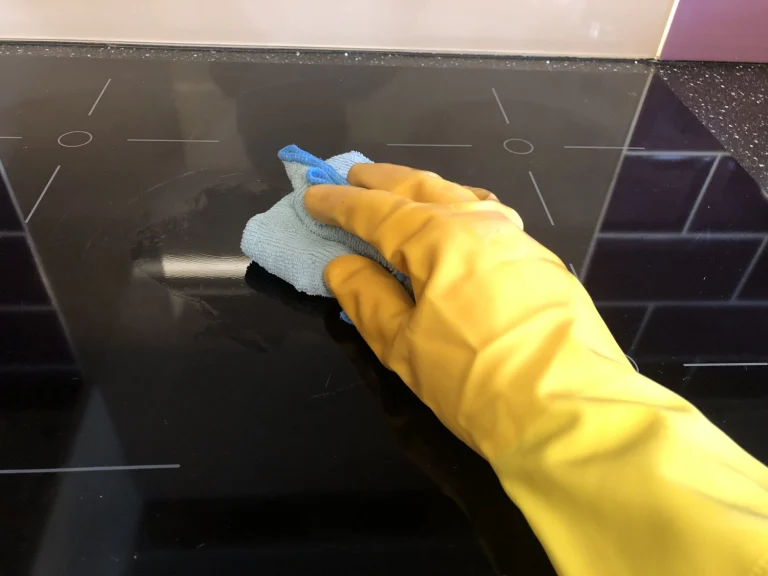
Cleaning an induction cooktop is an important aspect of maintaining its durability and ensuring that it continues to function effectively.
Here is a step-by-step guide for cleaning your induction cooktop:
Preparation
- Choose the right cleaning products: There are several cleaning products that can be used to clean an induction cooktop, including white vinegar, baking soda, and specialized glass cleaners (just make sure to check that the cleaner is safe for induction cooktops).
- Gather cleaning tools: You will need a damp cloth, dry cloth, microfiber cloth, soft sponge, and possibly a spray bottle.
Cleaning process – steps to clean your induction cooktop
- Remove food residues: Remove any food residues that are on the surface of the induction cooktop. This can be done by wiping down the surface with a damp cloth.
- Remove stubborn stains: For stubborn stains, you can try using a specialized cleaner, a solution of baking soda and water, or some distilled white vinegar. Plain dish soap and water will also work. Apply the solution to the affected area, let it sit for a few minutes, and then wipe it off with a damp cloth.
- Clean the surface of the glass: Once the induction cooktop surface is free of food residues and stains, it’s time to clean the glass surface of the induction cooktop. Simply wipe it down with a damp microfiber cloth or soft sponge.
- Finish with a dry cloth. Finally, wipe down again with a dry towel or cloth.
Pro tip:Several online resources suggest making up a mixture of vinegar and baking soda and using it to clean the induction glass. The problem, is that as soon as you mix them, a reaction occurs, and they cancel each other out. What you end up with is Sodium Acetate, which is a type of salt. It is far more effective to use the two individually.
What can damage an induction cooktop?
An induction cooktop is a modern and efficient cooking method, but it’s important to take proper care to avoid any damage.
The following items can cause damage to the glass surface of your induction cooktop:
- Abrasive materials: Steel wool, scouring pads, cleaning pads, and other abrasive materials should be avoided when cleaning the cooktop. They can scratch the surface and cause permanent damage.
- Hard water stains: Hard water deposits can leave stains on the glass surface. It’s important to clean these off promptly to avoid permanent damage. Simply spray distilled white vinegar on the glass, let it sit, and hard watermarks will disappear.
- Sugary substances: Sugar and other sweet substances can caramelize when heated and can be difficult to remove. To prevent this, it’s best to clean up any spills as soon as possible.
- Cooking pans: Rough and uneven pans can cause scratches. Never drag pans along the surface.
It’s essential to avoid using cleaning products that contain harsh chemicals or abrasive materials, as well as to avoid allowing spills to sit on the surface for an extended period.
By following these guidelines, you can ensure your induction cooktop stays in top condition and continues to work efficiently.
How to keep your induction cooktop clean
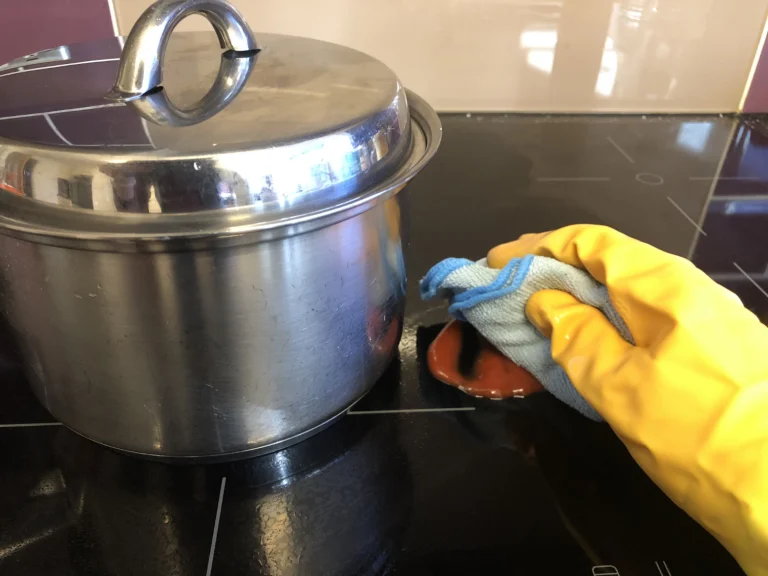
Maintaining a clean induction cooktop is important for both the appearance and performance of your kitchen appliance.
Here are some tips for keeping your induction cooktop looking like new:
- Clean up spills and food residue immediately – Don’t let spills or food residue sit for too long, as they can become harder to clean over time. Wipe them up with a damp cloth as soon as possible.
- Use appropriate cleaning products – When cleaning your induction cooktop, avoid using abrasive materials such as steel wool or harsh chemicals. Instead, opt for a gentle glass cleaner, distilled white vinegar, or baking soda and water.
- Use the right cleaning tools – To avoid scratching the surface of your induction cooktop, use a soft sponge or microfiber cloth. These materials are gentle enough to clean effectively without causing damage.
- Avoid sugary burns – Sugary liquid can caramelize and then stick to the surface of your induction cooktop and be difficult to remove. Avoid spills and try to clean them up as soon as possible if they do occur.
By following these tips, you can keep your induction cooktop looking clean and functioning properly for years to come.
Can you remove scratches from an induction hob?
Induction cooktops are known for their sleek and modern design, but as with any kitchen surface, they can be prone to scratches over time.
Scratches can not only affect the appearance of the cooktop, but also reduce its overall performance.
So, the question is, can you remove scratches from an induction hob?
Unfortunately, removing scratches from an induction cooktop can be tricky. Unlike other kinds, such as gas, induction cooktops are made from a smooth glass surface, which can easily scratch if not handled with care.
While it may be difficult to remove scratches from an induction cooktop, it is worth trying a surface cleaner specifically designed for induction cooktops, such as Bar Keepers Friend Cooktop Cleaning Kit.

Make sure to follow the instructions carefully and avoid using abrasive materials, as they can make the scratches worse.
If you’re unsure about a particular cleaner, it’s best to check with the manufacturer first.
It’s important to note that while these methods may help to reduce the appearance of scratches, they may not completely remove them.
The best way to keep your induction cooktop scratch-free is to avoid scratches in the first place by using proper cleaning techniques, smooth-based pans, and avoiding abrasive materials.

